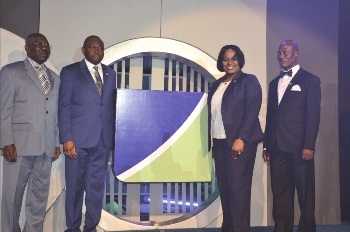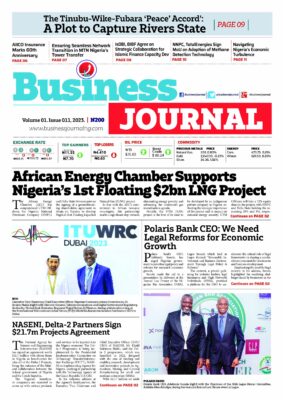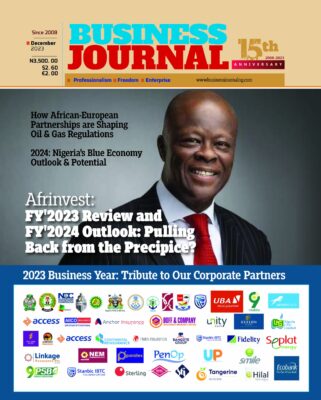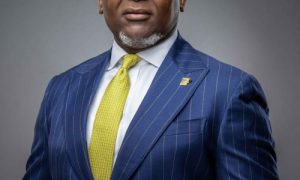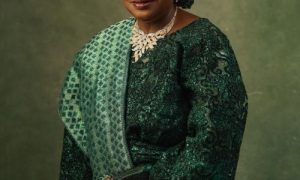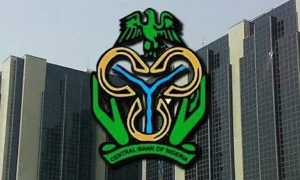In today’s corporate environment, three key ingredients are necessary for any organisation to remain relevant and profitable: Ability to engage the client; dynamism, and flexibility. Very few organisations have exhibited these traits over the past two decades more than Fidelity Bank Plc.
The recent refresh of Fidelity Bank’s corporate identity, the latest in its 27-year history, speaks to these important traits and the need to remain relevant in the world of corporate giants.
The new brand
logo is a three-colour block design. The block shows green and deep blue on two sides and a light white diagonal line dividing the colours, making the green and blue form triangles.
The bank explained that the deep blue colour speaks to its pedigree, its rich history as a financial institution, one which inspires strength, vigour and the clear focus of the path ahead. Green speaks to fertility, growth and progress to the future and the white line speaks to safety, purity and a guiding light.
The Group Managing Director/ Chief Executive Officer, Fidelity Bank Plc, Mr. Nnamdi Okonkwo said at the unveiling of the new identity that “it became obvious that we needed to reposition our brand as a modern and forward thinking bank.”
The CEO calls the rebranding a “contract” to become “visible to our stakeholders.” Indeed, the choice of colour for the new identity shows the bank’s need to be customer-centric; the need to align with the customer and proffer solutions to their financial needs. Green, Blue and White are usually associated with warmth, interest, growth, honesty, and strength of character. These are values that are ingrained in the Fidelity brand. Simply, through the new identity, the bank offers to burnish its partnership with the customer to discern and better understand their needs and thereafter proffer solutions that can help add value to their living experience, personally and professionally.
The arrangement of the colours also show creativity by implying that the bank’s engagement will be a two-way process in which the customer is just as relevant as the bank. Developing a solution that addresses the peculiar needs of any customer entails engagement with the bank such that both parties can better understand the customer’s needs and aspirations as a prelude to offering bespoke solutions to meet these needs and aspirations.
It’s a clear departure from the outdated practice where products and services are developed for customers to fit into them. The box-like logo is both simple and creative and speaks to solidity and promise. A box is a universal object of storage and could have within it a number of items that could be of benefit to individuals as well as organisations. The box-like logo is an allegory of financial solutions which can be found within the bank.
Thus, Fidelity is inviting its existing customers as well as prospects to approach it to unravel the goodies within. The logo is Fidelity Bank’s way of saying it has financial solutions that would appeal to a wider clientele base, and act as a differentiator for the brand. It is clear that in the logo concept deployed the bank is trying to emphasise partnerships across the different segments in the economy.
To further reinforce the bank’s drive for partnerships, Okonkwo said: “The business environment is changing and we realise that to remain true to the customers we serve, it is imperative that we stay in tune with the times. We are not just giving our brand a new look, more importantly, we are actively changing the way we do business; becoming more focused on our customers’ needs and exceeding their expectations from us.”
The Campaign Promise
In demonstration of “becoming more focused on our customers”, the bank equally launched a new consolidated advertising campaign, which projects Fidelity as a bank that takes on the tough jobs for its customers, thereby freeing them to concentrate on other important aspects of their lives.
Another significant highlight of the campaign is the advantages derivable from having a strong and trusted brand with a history of offering quality products and services. The TVC suggests that the bank has the products and services to meet the needs of every customer segment, a quest augmented by the bank’s restructuring and business expansion initiatives. The expansion drive and its aggressive play in the retail market will naturally enhance access by customers to its services wherever they may be.
It would seem that the selling proposition of the new brand identity, as encapsulated in the logo, the TVC as well as the redesigned website, which enhances customer experience, is a pledge by Fidelity to always be there, even in tough times, to help both businesses and individuals to achieve their goals by applying that personal touch, through resilience, that delivers exceptional value.
The Fidelity Promise
Reassuring the public of its essence and to reinforce the message that Fidelity Bank has their backs, the Chairman of Fidelity Bank Plc, Christopher Ezeh said:
“We still remain fidelity and you can trust our words.” The professionalism and integrity displayed by the bank in its product and service offerings is reflected in the growth the bank has achieved over the years, with the support of its stakeholders, including the customers, the chairman added.
Financial Muscle
Indeed, the bank’s financial strength is not in doubt; In 2014 FYE, gross earnings grew by 4.3% to N132.4 billion from N126.9 billion in 2013 while its PBT increased by 71.9% to N15.5 billion from N9 billion.
It is one of the most capitalised financial institutions today with a capital adequacy ratio in excess of 22%, higher than the 15% benchmark by the Central Bank of Nigeria.
“By the first half of this year, we have consolidated on the performance momentum of 2014 by recording a modest growth in critical indices despite a conservative view on the economy. Our operating income increased by 14.1% to N42 billion from N36.8 billion in HYR1 of 2014,” said the bank’s CEO.
The financial institution recently upgraded to Finacle version 10 to enable it implement services such as enhanced SME banking,
management information system reporting, application monitoring, and disaster recovery automation, in an effort to drive further growth.
Service Excellence
Thus, with its innovative strides in product development and deployment in the retail banking sector and laudable growth and significant market share, the Fidelity Bank brand is redefining its essence in the Nigerian financial services landscape as a strong force to reckon with in the battle for the mind of consumers in the lower, middle and top segments of the economy.
Through the current logo refresh and advertising and marketing communications campaign, the bank is evidently desirous to address the critical issue in today’s banking environment of adequate customer engagement on products and services development as well as empowering consumers with the resources to optimise such solutions.


